There are a variety of ways to prevent DVT and PE in an at-home, post-surgical setting
While DVT is a potentially life threatening post-surgical risk the fatal outcome of deep vein thrombosis is pulmonary embolism “PE”, when a blood clot breaks off and travels through the bloodstream to the lungs. Pulmonary embolism or PE disrupts the blood flow to the lungs.
Risk Overview with PE
It’s standard for surgeons to prevent DVT and prevent PE post-operatively, which can be done with medication or compression therapy. However, some patients who are more susceptible to DVT or PE may want to take additional measures.
People who are more at risk for deep vein thrombosis or a pulmonary embolism include:
- History of blood clots
- Immobility which is common before and after surgery
- Smoking
- Pregnancy, utilizing hormonal birth control, or being treated with hormone replacement therapy
- History of heart attack or stroke
- Underlying health conditions such as obesity, heart disease, heart failure, cancer, and previous diagnosis of COVID-19
Treating and Preventing Pulmonary Embolism
Surgeons are aware of patients that are at risk for deep vein thrombosis as well as pulmonary embolism. However, there are things that can be done to help prevent clots from forming. Before operation, there are precautions that are made to help decrease the risk for patients.
There are several medications on the market that patients can take to help prevent development of blood clots. Thrombolytic drugs are used to help dissolve clots. Here are examples of thrombolytic medications, also known as blood thinners:
- Eminase
- Retavase
- Streptase
- TNKase
- Abbokinase
In some cases, Aspirin is given to the patient as blood thinning medications assist with a decreased risk for blood clots. However, it has been proven that Aspirin alone is not a good way to prevent DVT.
Non-Medication Precautions for Preventing Deep Vein Thrombosis
Deep vein thrombosis, or DVT, is caused by lack of blood flow. This is common after surgery because veins are damaged within the surgical process, and a patient will have less movement causing less blood flow than normal.
This is why compression therapy in a post-surgical setting is extremely important. Intermittent pneumatic compression devices are used to help prevent blood clots in the deep veins of the legs. Simulating walking, devices help increase blood flow thus preventing blood clots. However, some use compression stockings as an alternative to pneumatic compression devices.
With hospital settings changing, patients are returning home faster after surgery than in previous years. This is another reason pneumatic compression devices remain critical for post-surgical recovery. Compression devices can be used at home allowing patients to reduce risk of readmission rates.
Learn more about pneumatic compression therapy and surgical recovery here.
Accessing a DVT Prevention Device
Pneumatic compression devices are prescribed by a doctor following a surgical procedure. However, Compression Solutions manages all medical billing for its DVT products and will work with the patient’s insurance on coverage. This means that hospitals or surgery centers do not need to budget compression devices as our medical billing department will take care of costs.
Learn more about our medical billing services here.
Many but not all people including doctors believe DVT is a precursor to PE.
Following a total joint surgery, patients are at high-risk for venous thromboembolism. This is why anticoagulation is administered following surgery to minimize VTE. According to the American College of Chest Physicians, there is little evidence to support the premise that DVT is a proxy of pulmonary embolism. In fact, some doctors are suggesting that PE is caused by multiple sources.
When sending a patient home with a DME product, sometimes they have issues with using the device correctly. However, when sending Compression Solutions devices home with patients, they will have access to 24/7 product experts who can answer questions, troubleshoot problems, and replace devices if necessary. This means that the patient can go through a simple, stress-free process for getting answers and the hospital or surgery center does not have to answer device-related concerns.
Covid and PE
While COVID-19 had a variety of negative side effects, many doctors noted that patients suffering from this virus have been diagnosed with DVT or PE.
According to a study from The BMJ, the risk for blood clots increased 70 days after COVID-19 for blood clot-related complications. However, it seems the risk for this type of complication has decreased as each COVID-19 wave has passed. However, for doctors treating patients with COVID-19, it’s important to understand the risk of venous thromboembolism.
Because COVID-19 is a new strain of the novel coronavirus, its convection with pulmonary embolisms is still being studied. However, doctors are uncovering new information often.
PE Risk Factors
While clotting is a normal process to prevent bleeding, the clot breaks off and travels to the lungs. Most blood-clot disorders, some are more at risk for developing a pulmonary embolism. Here are risk factors for those more likely to develop a PE:
- Family history of blood clotting disorders
- Recovering from orthopedic surgery
- Recovering from a serious injury
- Cancer or undergoing cancer treatment
- Age
- Obesity
- Smoking
For patients at risk for pulmonary embolism, it’s important that they know the symptoms and monitor them accordingly. Things like shortness of breath and chest pains tend to be the most common symptoms. From there- a doctor can diagnose a pulmonary embolism through a chest x-ray, MRI, or CT scan.
